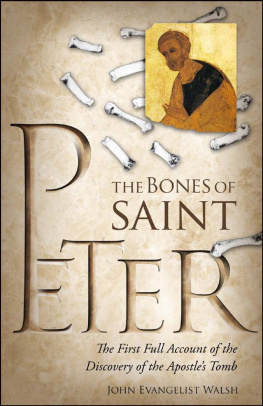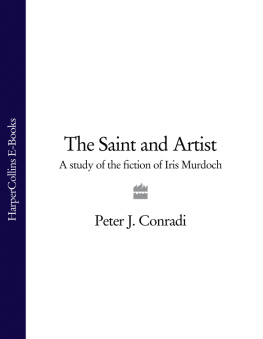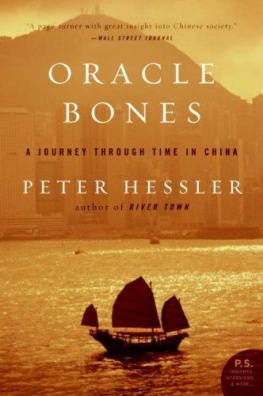John Evangelist Walsh - The Bones of Saint Peter
Here you can read online John Evangelist Walsh - The Bones of Saint Peter full text of the book (entire story) in english for free. Download pdf and epub, get meaning, cover and reviews about this ebook. year: 2013, publisher: Sophia Institute Press, genre: Detective and thriller. Description of the work, (preface) as well as reviews are available. Best literature library LitArk.com created for fans of good reading and offers a wide selection of genres:
Romance novel
Science fiction
Adventure
Detective
Science
History
Home and family
Prose
Art
Politics
Computer
Non-fiction
Religion
Business
Children
Humor
Choose a favorite category and find really read worthwhile books. Enjoy immersion in the world of imagination, feel the emotions of the characters or learn something new for yourself, make an fascinating discovery.
- Book:The Bones of Saint Peter
- Author:
- Publisher:Sophia Institute Press
- Genre:
- Year:2013
- Rating:4 / 5
- Favourites:Add to favourites
- Your mark:
- 80
- 1
- 2
- 3
- 4
- 5
The Bones of Saint Peter: summary, description and annotation
We offer to read an annotation, description, summary or preface (depends on what the author of the book "The Bones of Saint Peter" wrote himself). If you haven't found the necessary information about the book — write in the comments, we will try to find it.
The Bones of Saint Peter — read online for free the complete book (whole text) full work
Below is the text of the book, divided by pages. System saving the place of the last page read, allows you to conveniently read the book "The Bones of Saint Peter" online for free, without having to search again every time where you left off. Put a bookmark, and you can go to the page where you finished reading at any time.
Font size:
Interval:
Bookmark:
The Bones of St. Peter
The First Full Account of the Search for the Apostle's Body
John Evangelist Walsh
SOPHIA INSTITUTE PRESS
Manchester, New Hampshire
Sophia Institute Press
Box 5284, Manchester, NH 03108
1-800-888-9344
www.SophiaInstitute.com
Cover design by Theodore Schluenderfritz.
Printed in the United States of America.
Copyright 1982; 2011 by John Evangelist Walsh
Bible passages are quoted from the Revised Standard Version. All photographs, except numbers 8, 8a, and 25, are from then the Vaticans Official Report of 1951.
Library of Congress Cataloging-in-Publication Data Walsh, John Evangelist, 1927The bones of St. Peter : the first full account of the search for the Apostles body / John Evangelist Walsh.
p. cm.Originally published: 1st ed. Garden City, N.Y. : Doubleday, 1982.
Includes bibliographical references (p.) and index.
ISBN 978-1-933184-75-3 (ppbk : alk. paper)
1. Peter, the Apostle, SaintRelics.
I. Title. II. Title: Bones of Saint Peter.BS2515.W28 2010
225.92dc222010029896
For
TOM and GLORIA
Thomas and Mariann
Preface
Some extracts from scripture concerning the bodies of the patriarch Joseph, King Saul, and others:Then Joseph took an oath of the sons of Israel, saying, "God will visit you, and you shall carry up my bones from here." So Joseph died, being a hundred and ten years old; and they embalmed him, and he was put in a coffin in Egypt. (Genesis 50:25-26) And the people of Israel went up out of the land of Egypt .. And Moses took the bones of Joseph with him ... (Exodus 13:18-19) The bones of Joseph which the people of Israel brought up from Egypt were buried at Shechem, in the portion of ground which Jacob bought from the sons of Hamor the father of Shechem for a hundred pieces of money; it became an inheritance of the descendants of Joseph. (Joshua 24:32) When the inhabitants of ]abesh-gilead heard what the Philistines had done to Saul, all the valiant men arose, and went all night, and took the body of Saul and the bodies of his sons from the wall of Beth-shan; and they came to ]abesh and burnt them there. And they took their bones and buried them under the tamarisk tree in Jabesh, and fasted seven days. ( 1 Samuel 31:11-13) David went and took the bones of Saul and the bones of his son Jonathan from the men of Jabesh-gilead, who had stolen them from the public square of Beth-shan... And they buried the bones of Saul and his son Jonathan in the land of Benfamin in Zela, in the tomb of Kish his father. (2 Samuel 21:12, 14) As Josiah turned, he saw the tombs there on the mount; and he sent and took the bones out of the tombs, and burned them upon the altar, and defiled it... Then he said, "What is yonder monument that I see?" And the men of the city told him, "It is the tomb of the man of God who came from Judah and predicted these things which you have done against the altar at Bethel." And he said, "Let him be; let no man move his bones." So they let his bones alone, with the bones of the prophet who came out of Samaria. (2 Kings 23:16-18) "Brethren, I may say to you confidently of the patriarch David that he both died and was buried, and his tomb is with us to this day." (The words of Peter, Acts 2:29)
Acknowledgments
For various sorts of timely assistance, especially in obtaining materials and in the work of translation, I wish to offer my sincere thanks to the following: Dr. Margherita Guarducci of Rome University; Annamaria Conti of the Italian edition of The Reader's Digest; Luciano Belanzoni of Rome; Monsignor H. Monni and Don Michel Basso of the Vatican; Mary Cannizzaro, Robert Goyette, Carol Tarlow, and Virginia Armat; Sterling Library, Yale University; the staff of the Dixon Homestead Library, Dumont, New Jersey.
A special debt of gratitude is owed to all those scholars whose meticulous regard for the facts, and whose sincere attempts to interpret those facts, whether pro or con, have made my own studies so rewarding an experience.
PROLOGUE:
The Announcement
When the man named Simon Peter was brutally executed, some 1,915 years ago in Rome, there passed away one of that small band of historical personalities who deserve to rank as monumental. In history's roll of the great in all fields: religionists, statesmen, philosophers, conquerors, educators, scientists-few others can have lived a life similarly fraught, for so long, with such constant, portentous drama. Beginning so obscurely, so humbly, was anyone before or since ever burdened with so weighty and improbable a task? Assuredly, no other has continued, ages after the earth closed over him, to command such deep regard among living multitudes, generation after endless generation.
In the minds-and hearts-of many people it is no small thing that some part of the mortal remains of this man, through whose living body there flowed the power from Jesus to heal the sick and raise the dead, may still be in existence. Even if he is viewed, as in this case he should be, not in a religious context but simply as the first leader of a movement which was to become a world-altering revolution, the question of the survival of his remains still exerts a powerful fascination. And for just over a decade now, precisely that claim has confronted the world.
In the summer of 1968 it was announced by Pope Paul VI that the skeletal remains of St. Peter had at last been found and satisfactorily identified. The revered bones had been unearthed some time before, he said, from the tangle of ancient structures that lay deep beneath the magnificent high altar of St. Peter's Basilica in Rome. Paul was careful to explain that his statement rested on long and intensive study by experts, but then he deliberately went further, adding the weight of his own prestige. In light of the archaeological and scientific conclusions, he said, "the relics of St. Peter have been identified in a manner which we believe convincing... very patient and accurate investigations were made with a result which we believe positive." Firmly persuaded as he was, he had felt it nothing less than a duty to make "this happy announcement" at the earliest possible moment.
The circumstance that the bones were found under the basilica occasioned no great surprise, since the age-old tradition of the church had always located the original grave of the apostle just here. Yet to find that after so achingly long a time, and against all reasonable expectation, some part of this precious body should still be preserved, seemed incredible, a fit occasion for rejoicing. The day following the Pope's announcement, in solemn ceremony led by Paul himself, the bones were restored to their ancient resting place. Since then, privileged visitors have regularly been allowed to enter the small, silent chamber beneath the high altar to pay homage to the Prince of the Apostles. Through a narrow opening in the repository, the bones themselves encased in several transparent receptacles, are just visible.
In releasing his statement, Paul had purposely kept to the essentials of the matter, leaving the details to be supplied to journalists and others by Vatican officials and those directly concerned in the discovery. When the full story reached print, however, in newspapers around the world, there was immediate and widespread puzzlement. In place of clarification there arose annoying clouds of confusion. At fault, to a large degree, was the intricate mass of archaeological data to be absorbed. But far more significant was a single hugely surprising fact: the bones had not been recently discovered, as the Pope had seemed to imply. On the contrary, they had first been found nearly thirty years before.
There was no attempt to make a secret of this rather astounding development In fact, all those involved went to some length to make it known, and to explain the circumstances. But here, especially, scholarly thoroughness was much too slow-footed for the hurrying pace of daily or weekly journalism. Even the perplexing, not to say startling admission that, at first, the bones had lain neglected, in some vague way "forgotten," proved inadequate to hold the attention of the press-it could not watch even for an hour, but fell asleep on one of the most compelling scientific stories of the century. All too soon, the topic began fading back into the nether world of the professional journals and monographs from which Paul's declaration had so dramatically called it
Next pageFont size:
Interval:
Bookmark:
Similar books «The Bones of Saint Peter»
Look at similar books to The Bones of Saint Peter. We have selected literature similar in name and meaning in the hope of providing readers with more options to find new, interesting, not yet read works.
Discussion, reviews of the book The Bones of Saint Peter and just readers' own opinions. Leave your comments, write what you think about the work, its meaning or the main characters. Specify what exactly you liked and what you didn't like, and why you think so.











